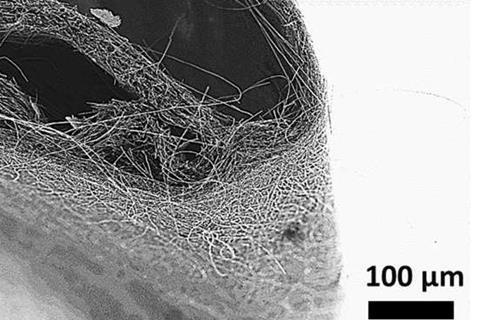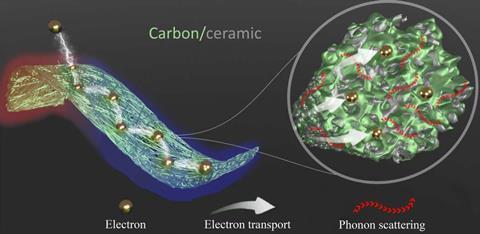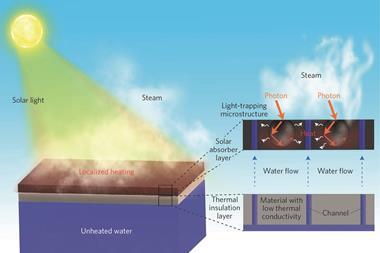
New carbon–ceramic composites developed by researchers in Germany retain high electrical conductivity while being extremely good thermal insulators – properties normally almost impossible to achieve together. The researchers hope that the materials, which are easy to produce and resistant to mechanical and thermal stress, may find important sustainability applications, as electrification of energy sources increasingly requires the thermal isolation of high-power electrical components. Moreover, their fundamental insights into managing heat flow could inspire new, even better materials.
In metals and graphite, the Wiedemann–Franz law states that thermal conductivity is normally proportional to electrical conductivity. This is because electrons flowing through a material carry energy and deposit it in the lattice when they scatter off atomic nuclei. This ballistic conduction cannot be suppressed and normally dictates the lowest achievable thermal conductivity. As a material’s electrical conductivity drops, however, it becomes increasingly hard to produce materials that stick anywhere near this limit. Other forms of heat transfer – principally the direct propagation of quantised vibrations called phonons – rapidly become the dominant means of heat transfer and, in most non-metals, render electronic heat transfer effectively irrelevant.
Xiaojian Liao and colleagues at the University of Bayreuth, Germany have therefore produced materials with relatively low electrical resistivity that strongly suppress phonon propagation. They started by electrospinning variable amounts of the precursors of polyacrylonitrile copolymer and oligosilazane before heating the resulting structures to 250°C in air to produce stable, oxidised, electrically-insulating polymer foam-like structures. Finally, they heated them again in nitrogen to 1000°C. The structures underwent phase separation, with the polyacrylonitrile forming carbon fibre matrices and the oligosilazane forming ceramic nanoparticles embedded within them. ‘The carbon forms an electrically conductive network, whereas the island structures formed by the ceramic part introduce phonon scattering and decrease the thermal conductivity,’ explains Liao. As a result, a significant proportion of the heat conduction came from electron flow.

The materials retained high electrical conductivity while achieving thermal insulation properties on a par with state-of-the-art polymer foams. Moreover, they remained thermally stable up to 1000°C and maintained their structure after 5000 cycles of folding and unfolding. The techniques used to produce them are readily industrialisable, the researchers say, so the materials could ‘tackle present bottlenecks’ in industries such as aerospace. They are also interested in applications in smart textiles – Liao explains that the work initially grew out of studies of novel yarns.
Materials scientist Yanfei Xu at the University of Massachusetts Amherst, US, says that ‘the mechanisms of heat and charge transport in hybrid materials are still not entirely clear to everybody yet and this paper gives us a lot of inspiring results… [The researchers] talk about the different heat carriers and how they can decouple them by scattering – that’s the fundamental part.’ She says this could aid other research groups in the design of new, even better materials. ‘From the application side, if we can make it with the same performance at large scale I think that will be very desirable.’
References
X Liao et al, Sci. Adv., 2023, DOI: 10.1126/sciadv.ade6066



























1 Reader's comment